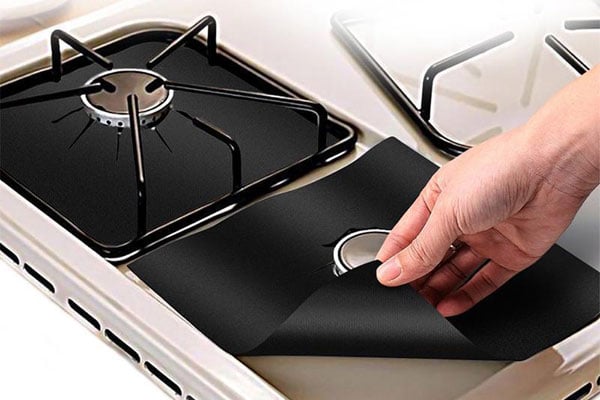Prime
Multipurpose cast iron pans

What you need to know:
In the realm of cookware, trends come and go but cast iron cookware stands as steadfast culinary guardian. Whether passed down through or discovered anew, their appeal transcends time, reminding us that sometimes, the simplest tools are the most indispensable.
In the dynamic world of culinary tools, few items evoke as much passion and debate as the humble cast iron skillet. For some, it is a cherished kitchen staple, a symbol of tradition and culinary prowess. For others, it remains an enigma, a piece of cookware shrouded in mystery and misconceptions. For instance, there is a misconception that cast iron is best used on a charcoal stove.
The fact is that cast iron pans work great on electric and gas cookers, although it may take a little longer to achieve the same results since cast iron is slightly slower to heat on an electric heating element.
Equipping yourself with a few tricks to get the most out of your pan is the trick. For example, if you use a cast-iron skillet on an electric range, you may need to cook things slightly longer, so use the upper ends of the timing ranges. And due to their heaviness, if you have a glass-top range, you should take extra care when moving the heavy cast-iron pan around on the stove to avoid any scratching or damage.
Yet, regardless of where one falls on the spectrum, there is no denying the enduring allure of these iconic pans. Cast iron skillets, with their rugged charm and unparalleled performance, have earned a special place in the hearts of chefs and home cooks alike.
Crafted from a blend of iron, carbon, and silicon, these pans are cast into shape, creating a durable cooking vessel that boasts exceptional heat retention properties. Unlike their modern counterparts, with their layers of cladding and synthetic coatings, cast iron skillets embrace simplicity; a single piece of metal that stands as a testament to the timeless art of cooking.
Versatile
But it is not just their durability that sets cast iron skillets apart; it is their remarkable versatility. Referred to as the workhorse of any kitchen, cast iron is an ideal choice for foods that need high heat. Meats that need a hard sear but should not be scorched, such as steak, or roasts that should be browned before braising, perform beautifully in a cast iron.
The surface of the meat takes on a deep brown colour and crust without leaving those irritating burnt, black bits at the bottom of the pan. As a bonus, the cast iron is oven-safe, so you can take it from the stovetop directly into the oven. Their ability to hold heat evenly and sear food to perfection has made them indispensable in professional kitchens and home kitchens alike.
Size
When it comes to size, cast iron skillets come in all shapes and sizes, from small pans perfect for solo cooking to expansive skillets capable of feeding a crowd. The size of your skillet depends on how many people you cook for. If you cook for yourself, an eight-inch cast iron skillet is perfect while for big families consider a 15-inch skillet.
Some cast iron pans come with a number on the handle indicating the size. Sometimes this number describes the diameter as measured on the bottom of the pan and sometimes it is the measurement on the top. Take a look at the manufacturer’s information to determine how your skillet is measured.
The weight of a cast iron skillet, once seen as a drawback, is now viewed as a mark of quality. While traditionalists may prefer heavier pans that sit firmly on the stovetop, newer innovations have introduced lightweight alternatives that offer the same durability without the strain on the wrists. Yet, regardless of weight, all cast iron skillets share a common trait; they are built to last, a testament to the enduring legacy of this timeless kitchen essential.
Maintenance
One of the polarising myths about cast iron pans is about their care. While it is prudent to not wash your cast iron with harsh detergents a little bit of mild dish soap should be okay. Avoid metal scouring pads, which can scratch and damage, and remove the layers of seasoning from the pan and expose the metal. If the pan gets those stubborn crusty bits, do not be tempted to soak, simply clean it by rubbing it down with salt and a kitchen towel when it is still warm.
Contrary to popular belief, cast iron skillets are resilient and capable of withstanding the rigors of daily use and abuse. A simple ritual of drying and oiling preserves their integrity, while any signs of rust can be easily remedied with a bit of elbow grease and steel wool; a small price to pay for a lifetime of reliable performance.
Cast iron pans should last a lifetime, but they must come with a manufacturer’s warranty. Of course, this won’t include improper care of your cookware, but for Lodge pans, there’s a limited lifetime warranty, and other high-quality cookware should have a warranty as well.
Cost
A good quality cast-iron pan is a solid investment and a useful addition to your kitchen that does not have to cost an arm and a leg. With a myriad of options available, ranging from high-end to budget-friendly, choosing the right cast iron cookware boils down to personal preferences. For those seeking low maintenance, enameled cast iron pans offer a viable solution, providing a nonstick surface without the need for seasoning.
Whether passed down through generations or discovered anew, their enduring appeal transcends time and trend, reminding us that sometimes, the simplest tools are the most indispensable.




